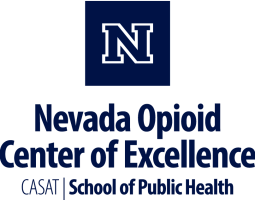Nevada State Opioid Response
Target areas for the State Opioid Response Grant are established using the State of Nevada’s published needs assessment and strategic plan. Service expansion areas have been selected for the purpose of providing direct services to clients with stimulant or opioid use disorder in the categories below.
Target 1: Medication for Opioid Use Disorders and/or Behavioral Health Treatment Service Expansion
Target areas for the State Opioid Response Grant are established using the State of Nevada’s published needs assessment and strategic plan. Service expansion areas have been selected for the purpose of providing direct services to clients with stimulant or opioid use disorder in the categories below.
- MOUD Expansion
- Opioid Treatment Providers(OTP)
- Partial Hospital Programs (PHP)
Target 2: Tribal Treatment and Recovery Services
Target 3: Recovery Support Services
Recovery Support Services funded under this announcement must provide services in accordance with principles that support stage of change, harm reduction, patient engagement, and the use of evidence-based practices. Recovery Support Services are intended to complement, supplement, and extend formal behavioral health services throughout the continuum of care. When working in conjunction with other behavioral and primary health services, peer support has been found to promote sustained behavior change for people at risk. Recovery Support Service programs are not intended to replace the role of formal treatment.
Target 4: Enhanced supports for children and/or families
Applicants should focus on enhanced support(s) for children and/or families that are impacted by opioid use or stimulant use disorder utilizing EBP including, but not limited to: home visiting, and/or strategies to address trauma and adverse childhood experiences (ACEs). A growing body of literature suggests that child maltreatment, neglect and traumatic stressors have longterm consequences for adult health behavior and health outcomes. This service delivery category will provide opportunities for working with children and adolescents whose parents or families are affected by opioid or stimulant use. Growing evidence has shown that providing a family-focused approach will have beneficial effects on family members to support the recovery process and build resilience and protective factors within the family structure. Eligible services/programs include substance use prevention and treatment, in-home parenting skills based programs, which includes parenting skills training, parent education, individual and family counseling, Kinship Navigator Programs, residential parent-child substance use treatment programs, and developmentally appropriate transition supports with older youth and adolescents.
Target 5: Hospital-Based MOUD Induction
Emergency Departments and hospitals provide 24/7 access to healthcare and offer a unique opportunity to make treatment for opioid use disorder universally accessible. Applicant organizations are expected to adopt the Bridge Model within emergency departments throughout the State to fully implement induction of buprenorphine for a patient in the ED experiencing opioid withdrawal and seeking support services. Applicants will be expected to participate in ongoing technical assistance with Bridge consultants for implementation to fidelity. Funding will be available to support the internal onboarding of a Peer Support Specialist/Community Health Worker and an identified hospital champion to support the adoption and implementation of the program within your organization.
Target 6: Recovery Housing
Recovery housing is a “housing model” that provides substance use specific services, peer support, and physical design features to support individuals and families on a particular path to recovery from addiction. This recovery housing program is not inclusive of all SUD, but specific to those overcoming opioid or stimulant use disorders. Meeting the housing needs of individuals with an opioid or stimulant use disorder plays a vital role in recovery. Individuals experiencing homelessness or without consistent housing find it difficult to address stimulant use without a safe place to live. Recovery Housing is designed to fill that void with a safe place with compassionate care. Recovery Housing is defined by SAMHSA as a shared living environment free from alcohol and illicit drug use and centered upon peer support and connection to services Page 14 of 54 that promote sustained recovery from substance use disorders. For this application, the substance use is specific to opioid or stimulant use. Applicants must demonstrate and document the number of beds available, programming, and ability to deliver appropriate peer support. Reimbursement for services provided in this category must follow reimbursement amounts as established by SAPTA.
Target 7: Rural and Frontier Mobile Recovery Units
Organizations that have relationships with rural and frontier communities are eligible to receive funding towards the purchase of a Mobile Recovery Unit, staffing the unit, and must identify underserved locations to be visited each weekday on a set schedule. Services will include access to a physician that can prescribe medication for an opioid use disorder (can be telemedicine), peer support, naloxone distribution, and referral to wraparound services. Staff will include a nurse, a certified or licensed counselor, and a peer recovery specialist. The organizations will work towards a goal of serving at least 5 individuals per day each week, totaling 25 individuals per week per mobile unit. Organizations are responsible for building relationships with providers in each targeted region and assisting with linkage to services and care coordination.
